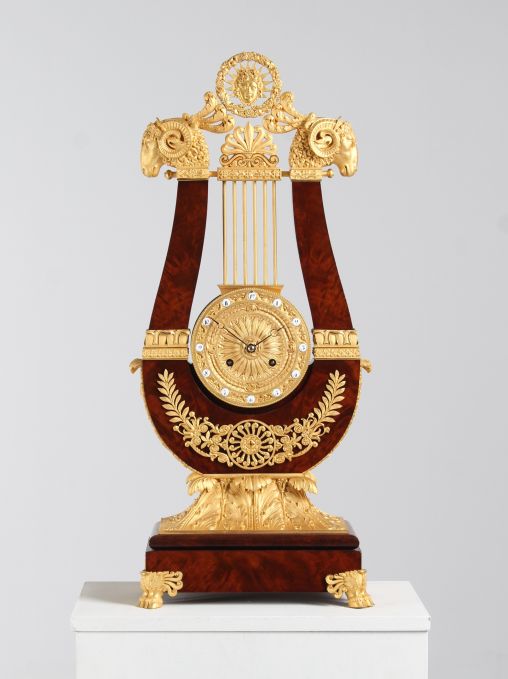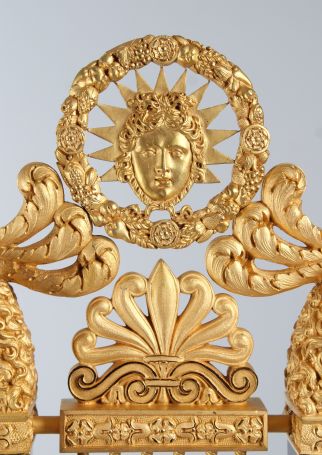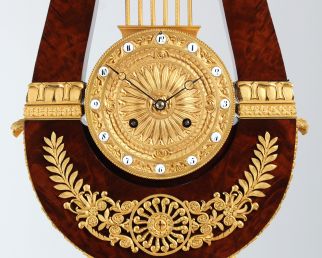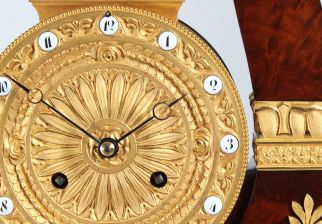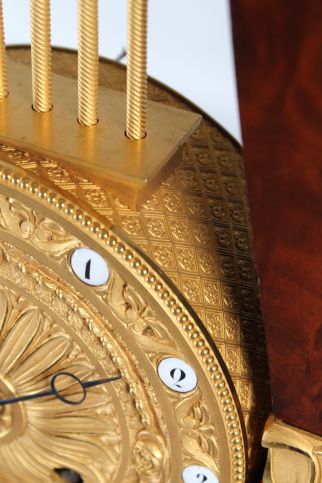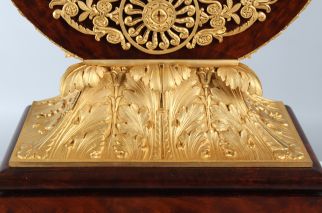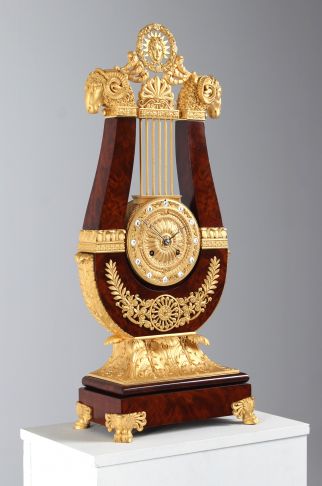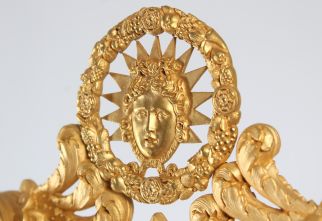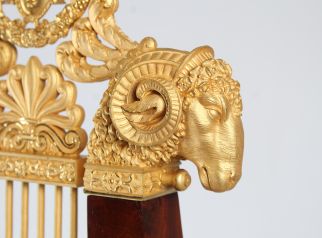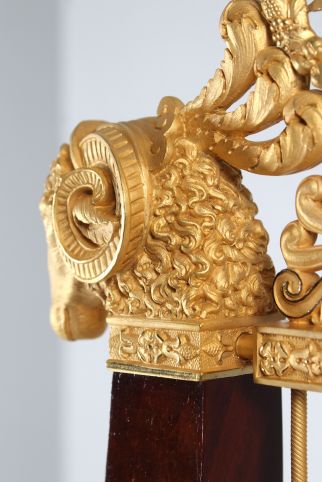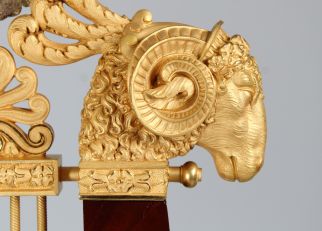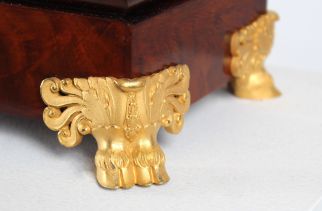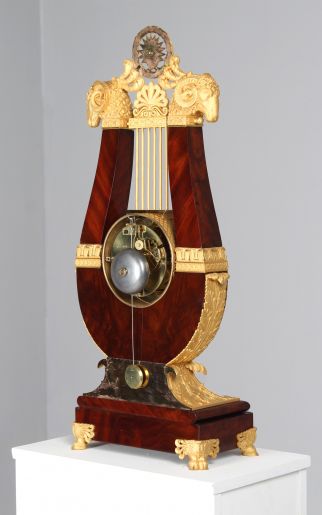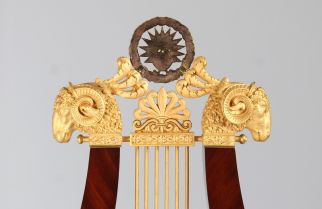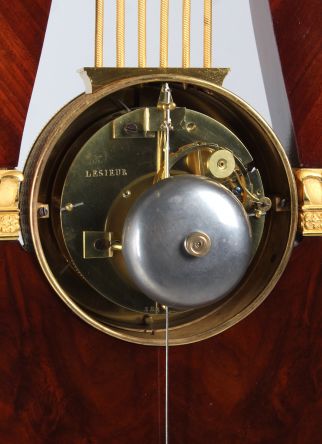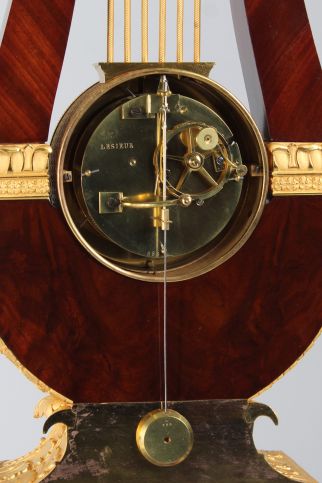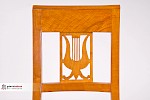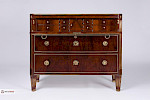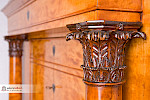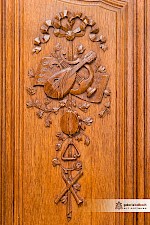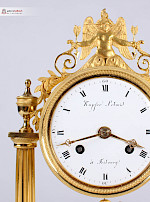Large Lyra pendulum
Paris
Bronze, mahogany
around 1820
Dimensions: H x W x D: 64 x 28 x 15 cm
Description:
Large and very fine lyre clock made of mahogany and fire-gilt bronze.
The base stands on feet designed as ram's hooves. The lyre, symbolising Apollo, the god of light and music, is held up by acanthus leaves with numerous bronze details. On the front, for example, we see a sun wheel held by laurel leaves, with further foliage supporting the instrument from the outside.
The high quality of the bronze work is particularly evident in the crowning of the clock. The rams' heads are so incredibly finely crafted. The chiselling makes the fur, horns and headdress tangible. The outstanding work on the back also shows the bronzier's love of detail.
And the face of the god himself is enthroned above all this - framed by a wreath of blossoms and ripe fruit that would not be able to thrive without the light of the sun.
The strings lead downwards to the centrepiece of the clock, a French 8-day movement with a half-hour strike and the signature of the clockmaker LESIEUR on the back.
The movement is built into a drum engraved with flowers; flowers and foliage can also be found on the bronze and fire-gilt dial. The white enamelled cartouches with Arabic numerals and the black Breguet hands ensure that the time is easy to read.
According to Tardy, the LESIEUR watchmaking family can be traced back to 1806 in Paris. At the time this watch was made, the workshop was located in the Rue de la Verrerie.
Personal note:
Many people interested in antique watches attach great importance to the signature of the movement. It is certainly nice to know the clockmaker and thus be able to prove the age of the clock not only on the basis of stylistic and technical characteristics.
Pendulums like this one show, however, that the clockmaker only played a small part in the overall creation of such a work of art.
There was a draughtsman or artist who designed the clock, a cabinetmaker who prepared the wood, a bronzier who made the moulds and produced the bronzes. Chisellers added the fine details to the bronzes and the gilding workshops gave them their final lustre and colour.
As you can see, many hands were needed to create a clock like this...
Condition:
Cleaned, absolutely reliable and accurate movement. The fire gilding of the bronzes has been cleaned and is in fantastic original condition. The wood has been hand polished with shellac and contrasts beautifully with the bright gold.
You can find a similar clock in the specialised literature:
Patrimonio Nacional Madrid - Catalogo de Relojes p. 451
Article found under: Clocks
Video Lyra Pendule
Also interesting
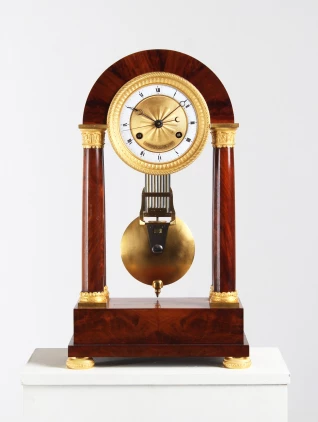
Precision portal clock
Paris
Mahogany, bronze, enamel
around 1825
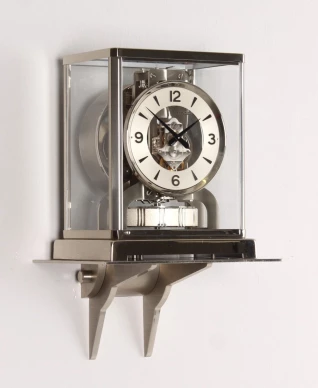
Original silver Atmos clock with wall bracket
Switzerland
Nickel-plated brass
Year of manufacture 1972
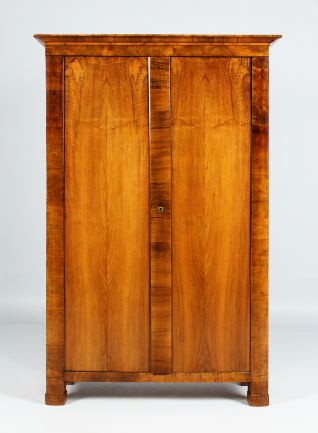
Small Biedermeier cupboard
Austria
Walnut
Biedermeier around 1830
